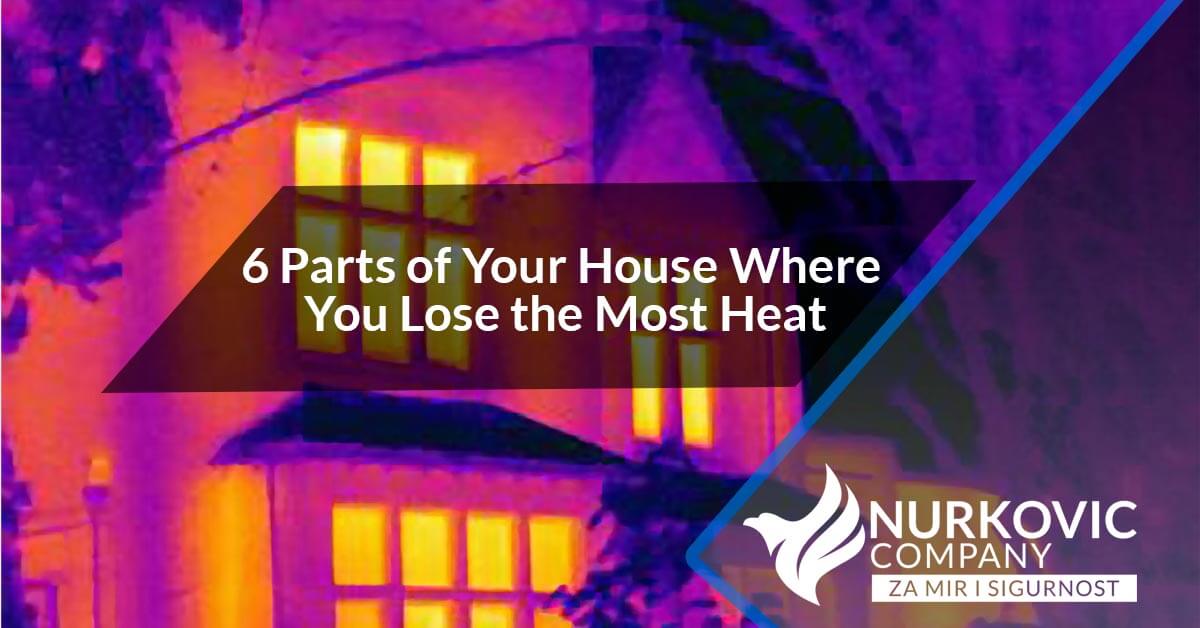We bring you very useful information in a new article, this winter the minuses are very big, and below you will study which are the 6 parts of your house where you lose the most heat.
When heat loss occurs in your home, it not only increases your electricity bills, but can also put a lot of stress on your furnace or boiler system. This strain on your system can ultimately cause it to fail and may result in your heating system being replaced sooner than expected. To prevent significant heat loss, we suggest Alaskan homeowners check the following areas of their home to identify areas of poor insulation or heat loss risk.

Basement walls and floors
20% of domestic heat is lost through the basement walls. This is due to poor foundation insulation of your basement walls and cement board. The best solution to this is to finish your basement if it is cement (which most of them are), or provide more insulation around the walls. Having a finished basement is a great way to increase your home’s R-value, or its thermal resistance, which determines how quickly it loses heat. However, unfinished basements can be insulated using batts and rolls, foam board, reflective sheeting or fiber insulation.
Cracks in walls, windows and doors
Approximately 38% of heat loss in your home comes from cracks in walls, windows and doors (often invisible to the naked eye). In fact, a ⅛-inch gap under a 36-inch-wide door will let as much cool air into your home as a 2.4-inch hole through the wall. To avoid this, we recommend regularly sealing the joints around your windows and door frames and installing weatherstripping around the moving parts of your doors or windows.
Poorly insulated windows
Windows cause large heat losses because they are made of glass, which is a poor insulator. There are several ways to prevent your home from losing heat through windows. First, installing triple-glazed windows or glass windows can help reduce heat loss through the windows by around 10-20%. A more cost-effective way to insulate windows is to install plastic sheets over the existing glass. Plastic sheeting can reflect heat back into your home during the winter, and can be easily installed using a hair dryer.
If you need windows that have excellent thermal insulation, take a look at our range of windows HERE.
Framed walls
Heat loss through the walls mainly occurs due to physical contact with cold weather. Over time, various types of insulation within walls can lose their effectiveness and therefore need to be replaced or upgraded. Adding insulation to your walls doesn’t require a major renovation, as there are repair options available for homes with existing walls. You can choose to install loose, filled or blown cellulose, fiberglass or mineral insulation in your wall framing, as well as spray foam. We recommend hiring a professional to handle this process for you.

Ceilings
Because warm air rises, a small percentage of your home’s heat is lost through your ceiling and/or attic. Cracks or holes in your attic or ceiling, along with improperly positioned vents, can allow heat loss. In order to avoid this, it is suggested to measure the thickness of the insulation. If the insulation is less than 11 inches of fiberglass or wool, or 8 inches of cellulose, you should add more. You can also consider insulating the entrance door to the attic.
Outer door
The least amount of heat loss occurs through the doors of your home. If you find that your door is causing a lot of heat loss, we suggest you buy a new door from the Nurkovic Company range that will surely meet all your criteria.
See the complete range of doors HERE.




